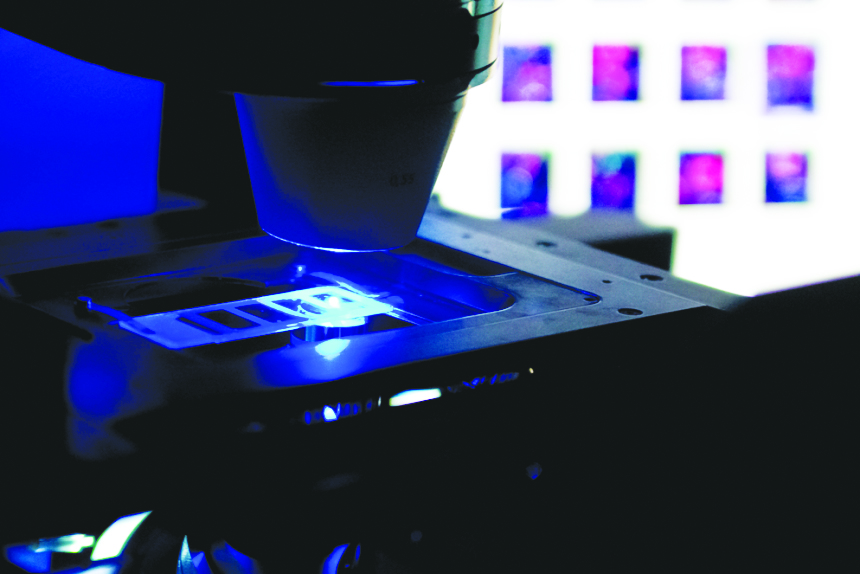A New Home for Neurosciences
The following is excerpted from the “Building on Excellence” series in BWH Clinical & Research News. Learn more about departments, divisions and labs moving into the new building at BWHClinicalandResearchNews.org.

The Zeiss confocal microscope in the Young-Pearse lab, one of many labs moving into the building, is used to capture images of neurons.
Smarter clinical trials. Advanced care for patients. Sophisticated imaging technologies. And bridges—both literal and figurative—to other departments and research areas. Members of the BWH Institute for the Neurosciences (BWIN) have all this and more to look forward to when the new building opens its doors this fall.
“Though no single building can hold all that we are doing at the Brigham in the neurosciences, our hope is that the new building will act as a focal point for all clinical and research areas that are a part of the BWH Institute for the Neurosciences,” said Adrian Ivinson, PhD, the institute’s executive director.
BWIN is the umbrella entity that facilitates all forms of collaboration—clinical care, research and education—within the neurosciences. Nine departments focus on disorders of the nervous system to varying degrees, yet they are currently scattered across BWH’s campus.
Once the new building opens, the institute’s three core departments—Neurology, Neurosurgery and Psychiatry—will physically come together. The close proximity of the clinicians, researchers and staff working in the new building will help connect colleagues, patients and ideas.
The timing of the new building’s opening helps herald a new century of discovery and progress in understanding and treating nervous system diseases, said Martin A. Samuels, MD, chair of the Department of Neurology, director of BWIN and the Miriam Sydney Joseph Professor of Neurology at Harvard Medical School.
“To our knowledge, there is no other place on earth that will have a building like this with a neurosciences institute of this magnitude,” he said. “This is the century of the brain, and we’re hoping to witness monumental progress made in advancing research and patient care.”
Having neuroscience labs and clinics in one building means it will be easier for researchers to identify and enroll patients in clinical trials for new treatment options tailored to their genetic backgrounds. This will allow small-scale but precise clinical trials to be undertaken that can lay a foundation for larger-scale trials to be conducted in partnership with industry.
“Crossing the translation bridge, which spans the gap between the laboratory and the clinic, is the key to creating personalized medicine,” Ivinson said. “This is how you bridge the gap between research discoveries and clinical implementation.”
David Wolfe, MD, MPH, director of Research for the Depression Center, and his team are currently working on three clinical trials. They are collaborating with colleagues in Neurology and Rheumatology to study the effects of novel anti-inflammatory medications to treat major depression.
“We hope that this move will provide a better experience for patients, allowing them to transition more easily between clinical and research settings,” said Wolfe. “The building will be a ‘one-stop shop,’ making scheduling, testing and patient care easier to coordinate and execute.”

Leave a Reply